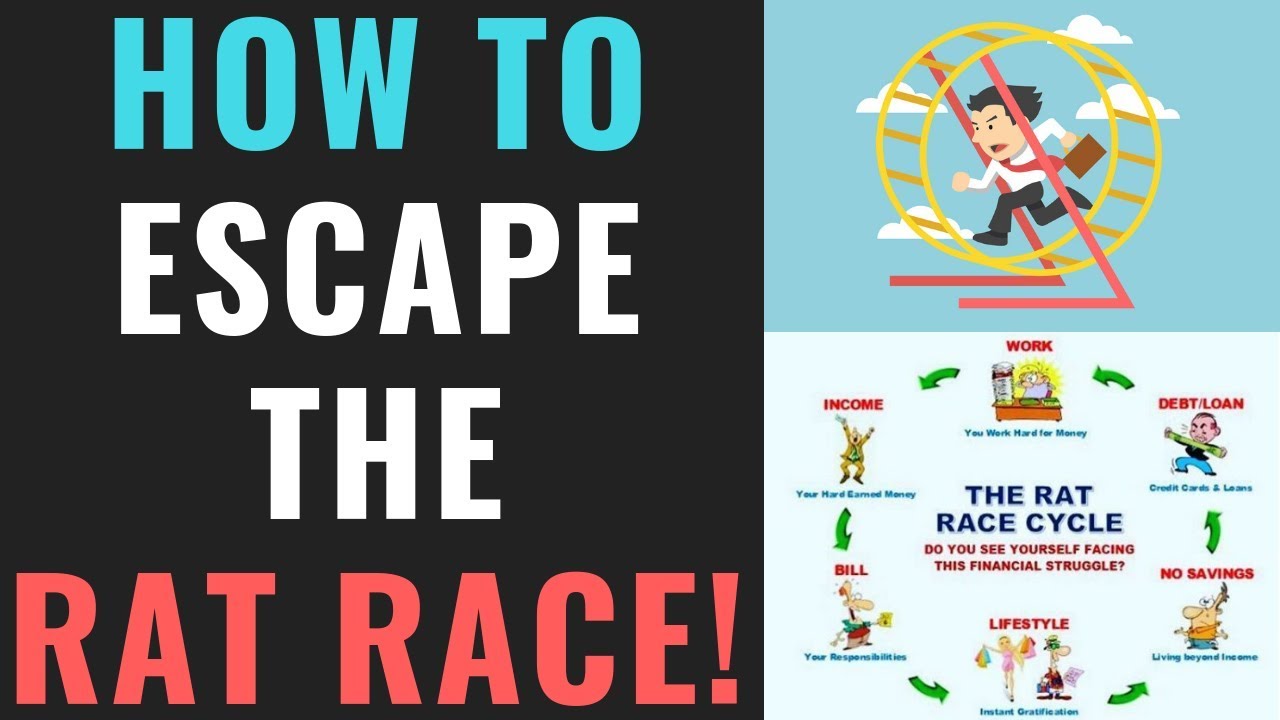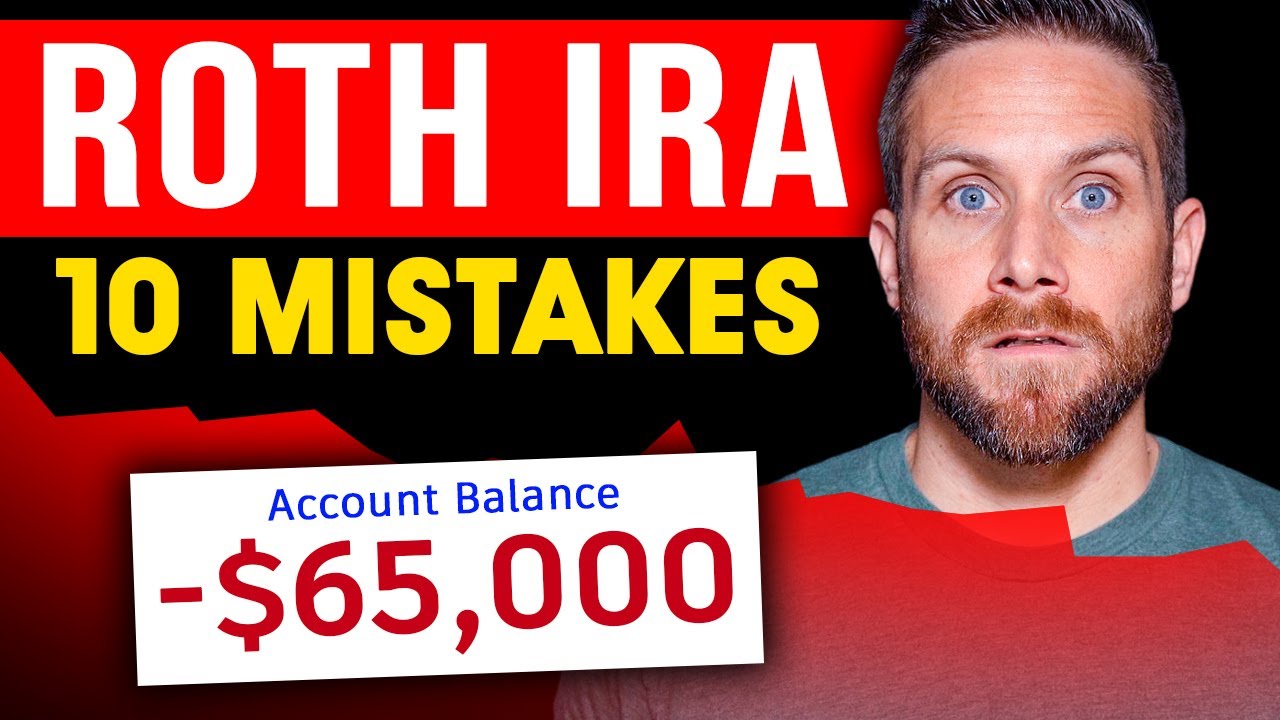
The $65,000 Roth IRA Mistake To Avoid
Jason 0 Comments Retire Wealthy Retirement Planning
– I've seen too many of you making some mistakes when it comes to investing in your Roth IRA. One of them could cost you $65,000 and the other one could cost you almost $500,000. You guys are seriously going to make my beard turn more gray than it already is if you don't knock it off. So let me show you what to watch out for, that way, you don't lose more money than you have to and I can save a few bucks on hair dye for a couple more years. A Roth IRA is a self-directed retirement account where you can contribute after tax dollars to be invested. Since the money going in is taxed, the growth of your investments are not taxed and the money withdrawal from the account are never taxed either, as long as you don't try to pull out some of the money before the age of 59.5. There is no such thing as a joint Roth IRA. So if you and your spouse want to contribute to one, then you'll have to do it individually, hence the name Individual Retirement Account.
If you both have enough earned income separately, then you can each invest up to the $6500 limit for the year. If one of you works and the other doesn't, but you file a joint tax return, then the person working can, of course, contribute to a Roth IRA and your spouse can contribute to a Spousal Roth IRA as well. Remember, these accounts are owned by the individual person and on paper, not co-owned by both people. I want to try to encourage you to max out your Roth IRA every single year, if possible, because if you don't do it for that year, then in the future you cannot go back and contribute for a previous year once that time limit has passed. A Roth IRA is one of those accounts where I would bend over backwards to make sure that I can put in the full amount allowed every single year.
In my order of operations for what to do with your money, I have maxing out a Roth IRA right after investing up to your employer match and HSA. That is how important this type of account is. The good news with this is that you actually have a timeframe of 16 months to contribute for each calendar year. So if we are in 2023 right now, then you have from January 1st, 2023, up until when taxes need to be filed for that year to contribute, which in this case, would be April 15th, 2024. That's how it is every single year, so ignore the actual dates in my example and pay more attention to the timeframes since the date taxes are due will change by a few days from year to year. Most brokerages will ask you which year you want to contribute to. For example, I personally invest using M1 Finance, which you can check out down in the description below, and also get a deposit bonus as well.
If I contributed to my Roth IRA through them right now, then they would ask if I wanted the money to go towards 2022 or 2023, since at the time of recording this, we haven't hit the date where taxes are due. This is great because it gives you some extra time beyond the current year to contribute Roth IRA money for that year. Before I tell you the next mistake that I see way too many people making, please help support my dog Molly by hitting that thumbs up button and sharing this video with anyone you think it would help. Once you deposit money into your Roth IRA, there's one more extremely important step you need to do that I see a ton of people missing, and that is actually investing the money.
I can't tell you how many people I've talked to over the years who just put money into the account assuming it would automatically grow, or knowing that they needed to invest the money, but just forgetting to do it because life happens, and things naturally slip out of our mind, only to check their account balance years later, realizing that it hasn't grown in value because they didn't invest the money. Stop the nonsense here and just set up auto investing within your investment account, and if you're waiting because you think that you can time the market to buy in at a lower price, you can't, because it's nearly impossible to do, so just to get the money invested right now. If you know how you want to invest the money, then great. If you don't, then I personally like the two fund portfolio for people who are in the accumulation phase of investing and in the three fund portfolio for when you're closer to retirement or in retirement.
I'll have a link to a playlist then I made just for you where I teach you about both of those portfolios down in the description below and above my head as well. When you contribute to a Roth IRA, all of your money is not locked up until 59.5. You can withdraw the contributions that you've made before that age without paying a penalty, but you cannot withdraw any of the gains within the account. For example, if you've contributed $6500 and the account has grown to $10,000, then you can withdraw the $6500 contribution, but you cannot touch the $3500 gain without paying a penalty until 59.5. I've gotta interject for a second to give my personal opinion on this.
While withdrawing money penalty-free is an option, I want to encourage you not to do this. To be brutally honest, I think that doing this is one of the dumbest, most irresponsible, short-sighted things that you can do. Withdrawing just $6500 worth of contributions would cost you $65,000 in future investment growth. So when any money is taken out of this account before retirement, think about how it's actually going to cost you 7,800 Chipotle burritos, or 65 new Apple iPhones, or anything else that you would buy for that amount of money. And yes, I am fully aware that you can do a penalty-free early withdrawal up to $10,000 before the age of 59.5 for a first time home purchase. But this is just as stupid as withdrawing your contributions early because that $10,000 is costing you over $100,000 in future investment growth when you pull that money out. Average annual home appreciation over the past 12 years has been 6.11%, and the US stock market has returned 12.27%. Leave your money in the freaking Roth IRA and go earn that $10,000 that you need to buy the home. Responsible investing takes time, like five or 10-plus years, and this money needs time to grow. The second you withdraw any of your contributions, you are cutting down that tree before it even has a chance to grow fruit.

Once you withdraw contributions from the past, you cannot replace that money in the future. I get that emergencies happen in life, so that's why you need to have money set aside in an emergency fund to pay for those things. Do not, under 99.999% of circumstances, use your Roth IRA money for anything other than when you retire. One thing I see way too many people doing is investing in a taxable brokerage account before they have their Roth IRA maxed out for the year. This is a huge mistake from a tax savings perspective for some of you because of how each account is taxed. With a Roth IRA, you invest with money that's already been taxed, so the money can grow tax-free and be withdrawn tax-free. With a taxable brokerage account, you are paying taxes for the ongoing dividend distributions every single year. Then you have to pay capital gains tax when you go to withdraw the money. Since the money within a Roth IRA will grow and can be withdrawn tax-free, realistically, you want this account to get as large as possible, but not at the expense of your personal risk tolerance.
You should not take on additional levels of risk by investing in more risky, unprofitable stocks that random YouTubers have been pumping over the past few years or actively manage funds to try to achieve higher returns. 99% of people, including myself, cannot handle investing in something with a high risk and potential, potential, high return. So don't even bother. The money in this account is for retirement, so is it really worth it to risk that 60-year-old's financial wellbeing because you decided to gamble with their money right now? I doubt it.
Some of you might be over the income limit to be able to contribute to a Roth IRA, or some of you will be at that point in the future as your income grows. You can still contribute to a Roth IRA to take advantage of the tax-free growth by doing a backdoor Roth. To simply explain the process, all you do is contribute to a traditional IRA. Do not invest the money yet. Then contact your brokerage to have them convert the money to a Roth IRA. Now, I have done it with M1 Finance before and it was extremely easy. It only took I think two or three days for the money to get into my Roth IRA. Only do this if it makes sense based on your current tax rates and future financial plans.
There's two things that you can do. if you are someone who thinks that you might be over the income limit, but you are not going to 100% know until the year is over. Number one, you can either wait until January of the following year, like we talked about in one of the previous mistakes that I mentioned, or number two, you can just contribute the money to a traditional IRA, then do a backdoor Roth within the year to get the money into the account so it can be invested. That way, if you are over the income limit, you've already done the backdoor Roth. If you're under the income limit, no big deal 'cause you had to pay taxes on that money that was going into the Roth IRA anyways. A question I get a lot is whether or not you can contribute to a Roth IRA on different brokerages.
The simple answer is yes. This is how it would play out. You can contribute up to the max for one year on, say, M1 Finance. Then you can decide to contribute up to the max on fidelity the next year. Then you can contribute up to the max on Vanguard the following year. So by the end of that third year, you would have three different Roth IRAs with three different brokerages, and there is no problem with that. You can take it one step further. If you decide, hey, out of these three, I actually like M1 finance better than the other two, you can convert the Roth IRAs with Fidelity and Vanguard into your M1 Finance Roth IRA. You can also split up your contribution for the same year among different brokerages. So if for this year you want to say contribute $4,000 to an M1 Finance Roth IRA and the remaining $2,500 into a Fidelity Roth IRA, then you can do that without any problems.
The only thing you cannot do is try to game the system by saying contributing $6500 into an M1 Finance Roth IRA and $6500 into a Roth IRA with another brokerage. You cannot exceed the maximum amount allowed per year across all of your Roth IRAs on all of your brokerage accounts. Technically, you could do that since all of the brokerages aren't talking to each other to keep track of what you are contributing, so you have to self-manage this. I would highly, highly recommend making sure that you do not do this, whether it's on purpose or on accident. I don't know what the penalty is for this, but all I know is that you do not want to get caught trying to defraud the government in any way, shape, or form. Long-term investing is the name of the game with a Roth IRA. This money is for when you are in retirement, so make sure to take that into account when investing this money. No gambling it on stocks that random YouTubers are promoting. I think the two or three fund portfolio is perfect for your Roth IRA, which you can learn more about in these videos to your left.
There's a bunch of free stocks and resources down in the description below to help with all of your personal finance and investing needs. I'll see you in the next one, friends, go..
As found on YouTubeRead More
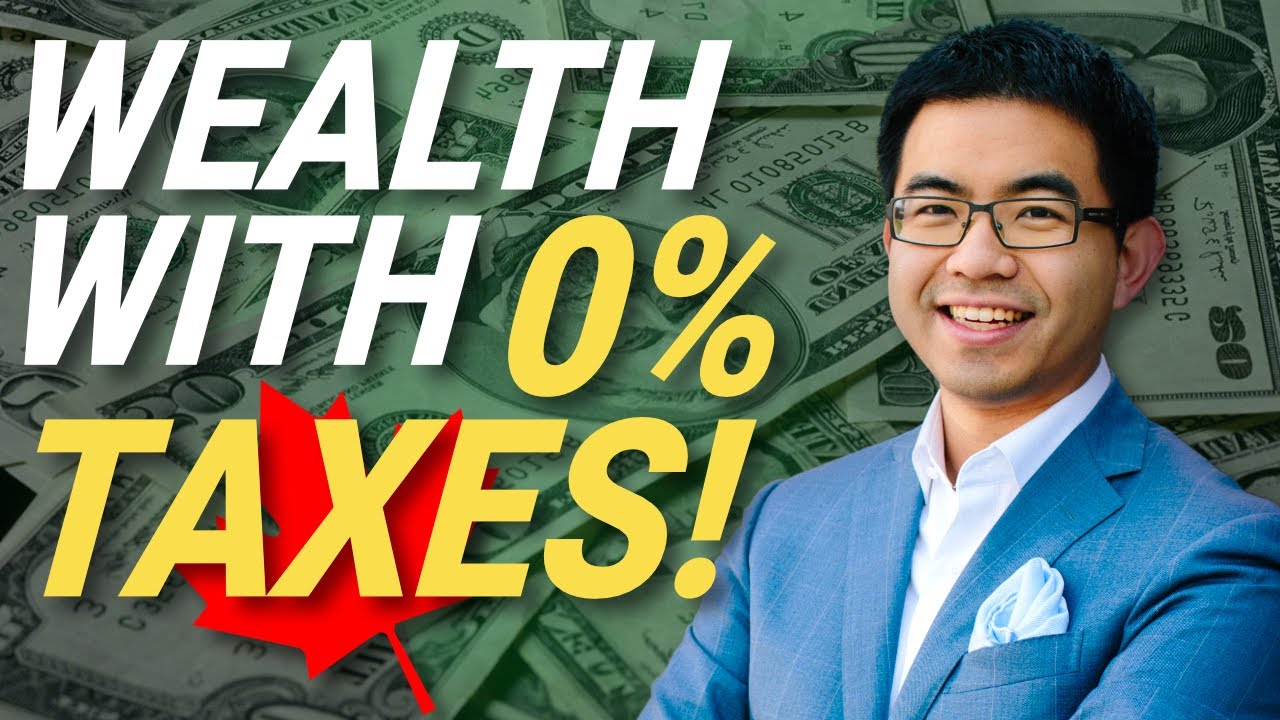
5 Strategies To Grow Wealth with 0% TAX in Canada
Jason 0 Comments Retire Wealthy
happy New Year last kickoff this year with lots of great content in today's video I'm gonna show you five perfectly legit ways to grow well with zero percent tax in Canada so make sure you stick around [Music] hey welcome back my name is Thomas C Chen we have the most five star Google reviews and Life Insurance Vancouver and retirement planning so starting this year if you want to know more about tax free wealth for your retirement and to protect you and your family using solutions that Canadian Banks don't want you to know about make sure you hit the Subscribe button below and enjoy what I have for you that's always a say it's not how much you make is how much that you can keep this is especially true when we invest in Canada because CLA will always come in and ask for the share when you make a profit on the investment and let me show you two scenarios in the first scenario Henry will put ten thousand dollars a year for the next 15 years with a 10 rail return per year then after 15 years it will have around 350 000 safe and on the other hand where we have Tom doing the exact same saving but this time every year when you make a profit CLA will tax you at 30 percent so instead of getting a thousand dollar profit in the first year you only get seven hundred dollars as profits and you will get only 270 000 after 15 years that means eighty thousand dollars goes to the cra's pockets so I want to share five strategies and tools that can help you grow your saving with zero percent tax so you don't have to be Tom in my second scenario the first strategy is really simple and straightforward and you've probably heard of it before is to max out your tax-free savings account or known as tfsa the tax free saving account was first offered in 2009 as a way for Canadians adults to send money aside tax free within a tax free saving you can invest in stock market or you can put a sign in the savings account depending on your goal and risk tolerance and those savings can grow tax-free throughout your lifetime this means all interests dividends and capital gain earned in your tax re-saving are tax-free when withdrawn and because you earn 100 of the profit that will make the compounding growth very powerful for example if we save six thousand dollars a year for the next 30 Years with a 10 rail return per year then you will have 1.08 million dollars saved and because tax free saving is not a taxable income so you do not need to pay any taxes and also it won't affect your retirement benefit such as the OA security maximizing your tax free savings potential is the easiest way to ensure your money is always working for you and the great thing is if you forgot to contribute last year the room can be carried forward the best way is by enabling an automatic deposit into your account like putting a 500 a month automatically so you just set it and forget it and remember the earlier you contribute the more time your investment have to grow the two downsides that I found about tax receiving is one that you have a limit each year to how much you can contribute to your tax receiving and important that you stay within your contribution room otherwise you'll be taxed on that excess amount and this can be varied depending on how many years you stay in Canada and if you don't know what your limit is log into your CRA account online to check it the other slight disadvantage is because tax free saving is too flexible so sometimes when you need the money to go for a trip or needed to pay down the credit card bill it will be always the first pocket to reach in according to the CRA statistics the average saving inside of the tax receiving is around twenty thousand dollars that's only a quarter of the max saving that you can put in alright let's move on to the next strategy which is to utilize your principal residence we all know that real estate is a very crucial part in our asset portfolio the return is quite stable and promising and the long one it brings inflation you can rent it out to collect additional income or you can flip it for the appreciation when you sell your home there's a good chance you'll get more than what you pay for it therefore taxes in real estate is one of the most profitable Avenue for CRA if your investment property is worth more when you bought in the government requires you to pay the capital gain tax on the increase in value your principal residence however is a special exception according to the income tax act you can designate one property as your principal residence in any given year your principal residence has to be something you can actually live in not a shared storage container or vehicle it can be however a cottage a House Condo apartment in a duplex or building a trailer a mobile home or even a houseboat therefore say you bought a house with five hundred thousand dollars and after 30 years when you decide to sell to downsize it it grew to 1.5 million normally that one million dollar profit needs to be taxed but because it's your principal residence it's completely tax-free and now you can use it for retirement the first tax-free strategy is to use eligible dividend income from the blue chip stock portfolio first let's understand what is dividend first thing of dividend is a bonus given out by big companies every quarter or every year when you buy a certain stock say Royal Bank you become the shareholder of rollback so when Royal Bank makes money they will pay you a bonus now Raul bank is paying 1.32 every three months per unit you have say you have a thousand shares then you get paid 50 to 80 dollars per year and investors like dividend because even when the stock price goes down they still pay the similar dividend return alright back to the topic since dividend is extra profit isn't it taxable then yes Dividends are count as investment income and a January tax accordingly depending on your tax bracket however when we look closer there's one instance when we don't have to pay tax even when we have dividend income that's right it's possible for Canadians to receive around fifty thousand dollars dividend income and no need to pay any tax right now I'm using British Columbia as an example as you can see here if your sole income is dividend income pretty much you don't have to pay any tax up to 53 000.

I'm not going to talk too much detail once eligible or non-eligible just think of dividend paid by big blue ship companies at eligible dividend therefore they are eligible for extra tax credit again you need to fulfill two criterias to max out this strategy one is dividend income must be your sole income meaning no work income no other investment income no money in your rrsp the other one depending on what profits you're in as you can see if you live in BC or Ontario then you don't have to pay any investment tax but when you live in Nova Scotia or like Quebec then you have to pay 10 tax on the same fifty thousand dollar dividend income so make sure you talk to your accountant for that hey sorry for the interruption but I got a special announcement for you I will be hosting a live webinar next month where I'm gonna talk about stack efficient strategy what can we do during this market downturn and how to boost your wealth this year so many goodies here that you don't want to miss it there should be a link below where you can check out the details and I only offer it to the first hundred people so first come first serve base make sure to check it out alright back to the video but what if I Max on my tax free saving I don't plan to sell my principal residence and I have other income so rely only on dividend income doesn't work for me well not to worry because the next strategy is to use a life insurance policy but wait a second is it life insurance a monthly expenses that gives you beneficiary and lumps of payment after you die that's right however on top of that when we structure properly life insurance can provide tax shelter growth and a tax-free income as well this usually involved with a permanent life insurance plan with Savings in debt like a universal life insurance or a whole life insurance now after you see a decent size of saving in there you can choose to take it out which might trick attacks or you can choose to grow against it and unlike a bank loan or credit card which requires credit or income check borrowing money from your life insurance policy is a contractual guarantee meaning they have to lend it to you and you do not need to explain what you'll be using the money for the money can be used for anything from bills to vacations to fund your kids college or a financial emergency and since this is a loan which is not considered as taxable income there is no tax involved sure because it's a loan there's interest involved but the best part is you can control when you pay back the loan all the interest payment so in theory you can delay everything until the day that you die and upon death any outstanding loan balance including any accumulated interest is deducted from the death benefits with the remaining balance payout tax-free to your beneficiary so therefore the entire process is 100 tax-free this is very common to people who is a business owner or Canadians who max out that tax free saving and have multiple real estate they can enjoy the tax Charter growth access the saving when there's emergency or during the Market's downtime and provide enough Reserve to pay for the final tax bill should one pass away if you're a small business owner this one is for you when you've created a very successful practice client and staff will no longer be the top concern but now taxes and secession are the top priority what happens when you sell your business to someone else just like any other asset CLA will come in and tax you at the profit say John runs a chiropractic business and now he wants to let it go and sell it to someone else and based on the fair market value his business is now worth a million dollar because it starts off with nothing so as capital gain will be the full 1 million dollar and half of that which is 500 000 will be taxed and therefore he needs to pay around 250 000 for a sale however there's something called the lifetime capital gain exception or lcge which allows Canadians Incorporated small business owners to claim a deduction when selling the shares of the corporation that can effectively eliminate the taxes realized on the sale of the business as mentioned previously capital gains can include profits from the sale of a property but it can also include business shares stocks and mutual funds lcge allows you to keep the profit from qualifying sales up to nine hundred and thirteen thousand dollars in 2022 but for easy math I would say it's just close to one million dollars that means John doesn't have to pay any capital gain tax when it sells its practice so that he can use that extra money for retirement future investment or to create an Estates for inheritable purpose to qualify only an an official their relatives or partnership must own the business share for at least 24 months before claiming the lcge this requirement stops investors from buying and reselling small business share only for tax purpose furthermore a company must be owning at least 50 percent of its asset in active business Corporation inside Canada at the time of sale in addition all individuals who apply for an lcge must be residents of Canada for the entire tax year in which they claim the exemption so again talk to accountant for further details alright those are the five strategies I have for you but wait I want to throw in one more as bonus and is to invest in Blue Chip stocks for the long term as we know if we invest in a non-recious account like not in the rrsp OR tax receiving then we have to pay capital gain tax a profit but that's a capital loss as well and capital loss can be used to offset the capital gain tax liability by selling securities in a non-registered account at a loss if Capital laws exceed capital gains the lesser of three thousand dollars of the excess loss or the net capital loss can be deducted from the other income so let's say you earn a thousand dollar profit from selling stock a but lost a thousand dollars when you sell a different stock then your profits is effectively zero the profit and loss cancel each other out in that instance you won't have to pay any capital gain tax this is really useful especially 2022 is a bad year for stock market and 2023 could be the same so with this strategy you can rebalance your portfolio and still able to achieve its tax-free status if this sounds complicated work with a tax planner and investment advisor can help determine when and how to sell Securities to minimize gain and maximize the losses right now hey I hope I've given you some ideas on how you can reduce your taxes let me know which strategy you have implemented in the comment below and which one are new for you like I said before 2023 can be a charging year as well but I truly think there are lots of good opportunities to grow up to as long as the right planning so if your depth about your saving plans have a chat with my team and I and I wish you a fantastic 2023 and until next time
As found on YouTubeRead More
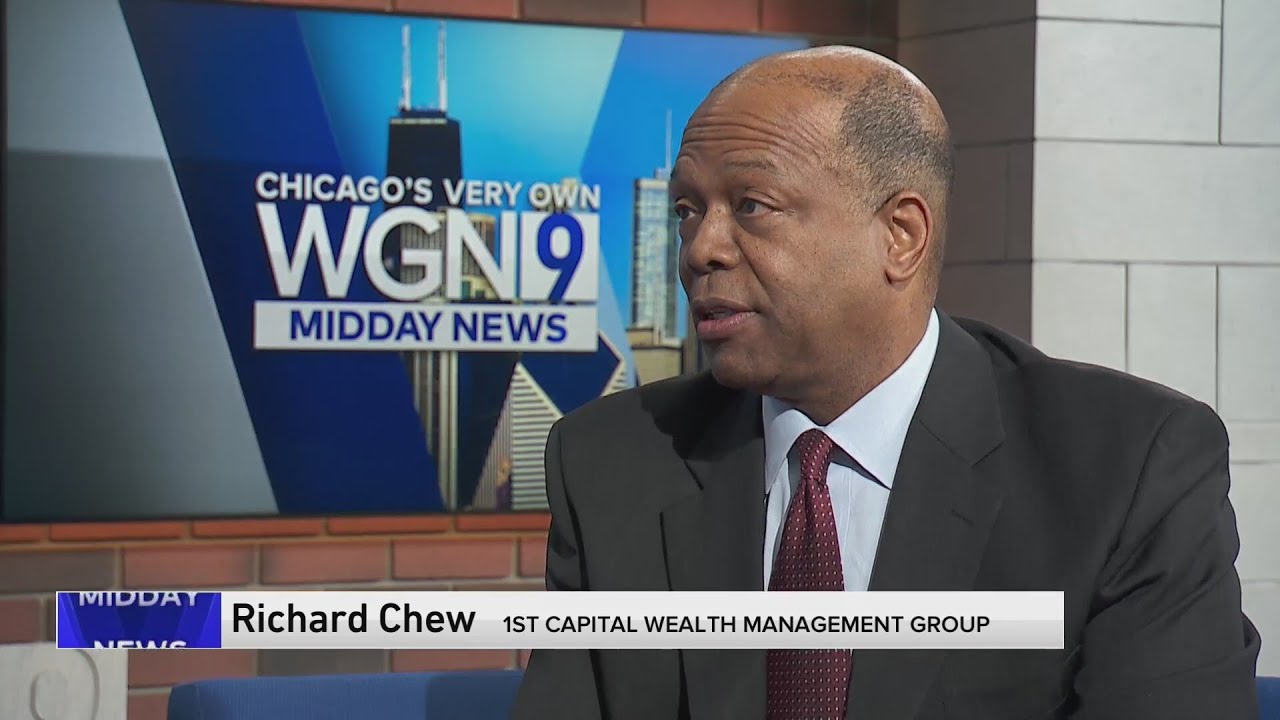
Your Money Matters: How to plan for retirement if your job doesn’t offer a 401(k)
Jason 0 Comments Retire Wealthy Retirement Planning Tips for Retiree's
>> ALL RIGHT. THANKS SO MUCH FOR WELL, IN THE MIDDAY FIX, IF YOU'RE A NON-TRADITIONAL WORKER LIKE A FREELANCER, ENTREPRENEUR OR INFLUENCE ARE PLANNING FOR RETIREMENT IS A BIT MORE CHALLENGING THOSE JOBS TYPICALLY DON'T OFFER A 4, 1, K, BUT WE'VE GOT AN EXPERT HERE, RICHARD. SHE WAS A FINANCIAL LIFESTYLE EXPERT WITH FIRST CAPITAL WEALTH MANAGEMENT GROUP HERE WITH SOME TIPS ON HOW TO BUILD A RETIREMENT FUND. >> RICHARD, THANKS SO MUCH FOR JOINING US. IT'S GREAT TO HAVE YOU HERE. GOOD TO BE HERE. FOR HAVING ME. ABSOLUTELY. AND AS WE WERE JUST TALKING ABOUT, YOU KNOW, POST PANDEMIC, A LOT OF PEOPLE HAVE NOT GONE BACK TO THEIR TRADITIONAL JOBS AND ARE PROBABLY EXPERIENCING THE FREEDOM OF BEING THEIR OWN BOSS PER SE. BUT A LOT OF FUNDAMENTAL AND FOUNDATIONAL STRUCTURES THAT WERE IN PLACE TO HELP THEM SAVE ARE NOT THERE. SOME. CAN. HOW CAN WE HELP WELL, IT'S A BIG DEAL AND A LOT OF PEOPLE RIGHT NOW ARE STRUGGLING WITH THAT. >> AND THERE'S A THERE ARE ANSWERS TO IT. OBVIOUSLY, IF IF YOU'VE LEFT YOUR. PREVIOUS EMPLOYER, WHETHER BY CHOICE OR BY FORCE AND THERE'S MONEY ON THE TABLE.
I YEAR-OLD FOR ONE K ONE OF THE FIRST THINGS YOU WANT TO DO IS TAKE IT WITH YOU. MEAN, LITERALLY TAKE THE MONEY WITH YOU RIGHT BUT ROLL THAT YOUR OWN NEW. I WRITE YOU CAN DO THAT WITHOUT ANY COST OR ANY TAX LIABILITY AND THE COOL THING ABOUT IT IS IT KEEPS YOU IN THAT STRUCTURE, OK? BECAUSE YOU'VE GOT THE LIMITATIONS OF WHAT YOU CAN PUT IN PER YEAR, WHICH WAS SIMILAR TO WHEN YOU HAD A 4, ONE K AND YOUR OLD EMPLOYER.
BUT THE MOST IMPORTANT THING IS WHEN YOU IF YOU LEFT DURING THE PANDEMIC OR POST-PANDEMIC, WERE YOU AND YOU WALK AWAY FROM THAT ORGANIZATION AND TAKE THE MONEY WITH YOU BY ROLLING IT INTO A NEW HIGHER RATE OF YOUR OWN TO TRADITIONAL OR ROTH. IT DOESN'T MATTER. IT JUST DEPENDS ON THAT, SIR. THAT'S KIND OF A TAX QUESTION. AND SOME I RECOMMEND THAT A PERSON LOOK AT WHERE THEY ARE. THEY'RE GOING TO BE SELF EMPLOYED. THEN THEIR THEIR TAX BRACKETS CHANGING IMMEDIATELY. THEY'VE BEEN EMPLOYED AT A COMPANY AND NOW THEY'RE GOING TO BE SELF EMPLOYED. THEIR TAX BRACKETS AND ALL THAT WILL BE DIFFERENT. SO THEY NEED TO LOOK AT WHAT'S RIGHT FOR THEM.
AND THAT'S WHERE THE TECH SECTOR ADVICE COMES INTO PLAY. SO EITHER ONE AS GOOD AS BUT TO YOUR POINT EARLIER, AS LONG AS YOU'RE PUTTING SOME STRUCTURE BACK IN AND SAVING. OKAY. AND THEN WHAT SOMEONE WHO IS SELF EMPLOYED OR A BUSINESS OWNER AND THEY DON'T HAVE. >> ANY EMPLOYEE SITS JUST JUST THEM, THOUGH. WELL, THERE'S A COUPLE OF OPTIONS THAT CAN DO A SOLO FOR ONE K THAT CAN DO WHAT'S CALLED THE SEP. AND EXCEPT IT'S GOT A COUPLE OF DIFFERENT GUIDELINES. BUT IN THE CASES OF THE SOLO FOR ONE K I A STRONG ADVOCATE OF THAT. IF YOU HAVE A SMALL BUSINESS AND IT'S JUST YOU AND MAYBE A SPOUSE WHO MAY QUALIFY. OKAY. IT'S A GREAT TOOL TO USE ON THAT. DOES HAVE YOU KNOW, LIMITATIONS IN TERMS OF HOW MUCH YOU CAN PUT AWAY FOR YEAR. BUT AGAIN, IT GOES BACK TO WHAT YOU WERE SAYING BEFORE. IT'S ABOUT THE MUSCLE MEMORY OF HAVING THE STRUCTURE AND YOU CAN CREATE THOSE ON YOUR BY CREATING A SOLO FOR ONE K. AND WOULD YOU SAY THAT FOR PEOPLE WHO ARE SELF EMPLOYED IN OUT HERE DOING THEIR OWN THING.

IS IT STILL POSSIBLE SAVE AS MUCH AS YOU WOULD, EVEN IF YOU WERE A PART OF A TRADITIONAL, YOU KNOW, WORKSPACE. SO HERE'S WHAT HAPPENS WHEN YOU WORK FOR BIG COMPANIES FOREIGN ORGANIZATION, WGN OR ANY OTHERS. AND THERE'S A 4, ONE K PLANS PART OF YOUR RETIREMENT PLANNING. YOU'RE CONTRIBUTING AND THE COMPANY IN MOST CASES, THEY'RE MATCHING TO SOME EXTENT. THAT GOES AWAY. WHEN YOU LEAVE IN TERMS OF THE COMPANY MATCHING BECAUSE NOW YOU'RE THE SO THAT'S WHERE IT'S REALLY CRITICALLY IMPORTANT TO MAKE SURE THAT YOU ARE STILL CONTRIBUTING AS LONG AS YOU CAN TO THAT MAXIMUM THAT YOU CAN CONTRIBUTE.
SO YES, THE SIMPLE ANSWER IS THERE'S STILL THAT OPPORTUNITY. IN FACT, IN SOME CASES, IT'S EVEN BETTER BECAUSE YOU HAVE MORE CONTROL AND YOU CAN USE SOME OF THE BOTH TAX DEFERRED AND TAX FREE TOOLS TO GET TO THAT POINT DOWN THE ROAD, OK? AND THEN WHY IS IT SO IMPORTANT? AS WE'RE TALKING ABOUT RETIREMENT SAVINGS? YOU KNOW, OBVIOUSLY THE SOONER YOU START THE BETTER. BUT FOR SOMEONE WHO SAYS IT'S JUST TOO LATE FOR ME, YOU KNOW, WOULD YOU EVER SAY THAT TO ANYBODY IN NOW? TOO LATE BECAUSE THERE'S A COUPLE WAYS THAT THAT WE LOOK AT IT. ONE IS IT'S NEVER TOO LATE FOR YOU TO START BECAUSE YOU ALWAYS CAN TAKE ADVANTAGE OF SOME OF THE AFTER TAX TOOLS TO USE. BUT IT'S NEVER TOO LATE FOR THOSE WHO CARE ABOUT BECAUSE AT THE END OF THE DAY, SAVINGS IS PASSES CAME. SO IF YOU'RE PUTTING MONEY AWAY, SOMEBODY IS GOING TO BENEFIT FROM THAT. IT MAY NOT DIRECTLY BE YOU, BUT IT MAY BE PART OF YOUR LEGACY. WE HAVE JUST UNDER A MINUTE LEFT. RICHARD, IS THERE ANY LESS POINTS TO BITS THAT YOU WANT TO, YOU KNOW, JUST GET ACROSS THE FOLKS BEFORE WE WRAP UP, WE'RE GOING TO YOUR ORIGINAL QUESTION AND YOUR SECONDARY QUESTION ABOUT CAN YOU DO IT? ARE YOU TOO OLD? YOU'RE NEVER TOO OLD.
START WHERE YOU ARE. MAKE SURE THAT YOU BASE IT ON YOUR BUDGET SO THAT YOU CAN CONTINUE TO DO IT. SO LIKE WORKING OUT AND, YOU KNOW, WE ALL KNOW THIS. YOU GET TO THAT PLAN ON THE LOSE WEIGHT, GET BETTER SHAPE AND YOU TRY TO DO TOO MUCH AT ONE TIME BECAUSE YOU DIDN'T LOOK AT YOUR BUDGET OF YOUR TIME. IN THIS CASE WHEN IT COMES YOUR FINANCIAL BUDGET, THE SAME THING APPLIES, START SAVING. LOOK AT YOUR BUDGET, DETERMINE WHAT YOU CAN DO AND THEN BE ABLE TO STICK TO IT. THAT'S PROBABLY MY BIGGEST TIP IS JUST JUST SAFE. ALWAYS SAY MY WIFE AND I TALK ABOUT THIS ALL THE TIME. ARE WE SAVING WE AS AS PROFESSIONALS TO THE SAME THING. SO TO THE CONSUMER JUST START WHERE YOU ARE AND THEN BE ABLE TO BUILD AND GO FORWARD. ALL RIGHT. ONE OF MY MODELS PENNIES ADD UP, SAY SURE.
ALL RIGHT. YES, THANKS SO MUCH, RICHARD. WE APPRECIATE YOU BEING ON THE SHOW. THANK YOU. CAN GET MORE INFORMATION AT FIRST SEE IG DOT COM OR FOLLOW THEM ON SOCIAL MEDIA. AGAIN, RICHER THANK YOU SO MUCH. WE APPRECIATE .
As found on YouTubeRead More
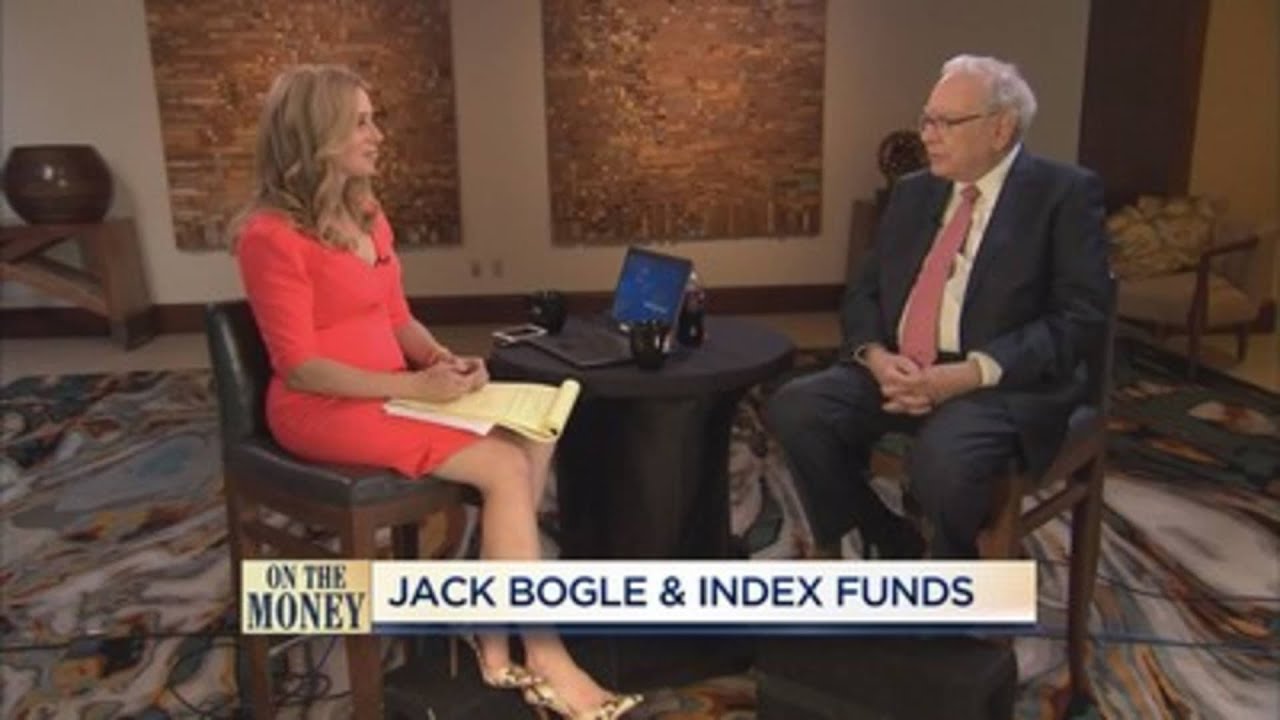
Buffett on retirement
Jason 0 Comments Retire Wealthy Retirement Planning Tips for Retiree's
FOR PEOPLE RIGHT NOW WHEN IT COMES TO SAVING . >> I THINK IT'S THE SAME THING THAT MAKES MOST SENSE FRANKLY ALL OF THE TIME, AND THAT IS TO CONSISTENTLY BUY AN S&P 500 LOW COST INDEX FUND. KEEP BUYING IT THROUGH THICK AND THIN, AND ESPECIALLY THROUGH THIN. BECAUSE THE TEMPTATIONS GET — WHEN YOU SEE BAD HEADLINES IN NEWSPAPERS, MAYBE TO SAY WELL MAYBE I SHOULD SKIP A YEAR OR SOMETHING. JUST KEEP BUYING. AMERICAN BUSINESS IS GOING TO DO FINE OVER TIME. SO YOU KNOW THE INVESTMENT UNIVERSE IS GOING TO DO VERY WELL. THE DOW JONES INDUSTRIAL AVERAGE WENT FROM 66 1,497 IN ONE CENTURY, AND SINCE THAT CENTURY HAS ENDED, IT'S MORE OR LESS DOUBLED AGAIN. AMERICAN BUSINESS IS G. THE TRICK IS NOT TO PICK THE RIGHT COMPANY, IT'S TO BE — BECAUSE MOST PEOPLE AREN'T EQUIPPED TO DO THAT. AND PLENTY OF TIMES I MAKE MISTAKES. THE TRICK IS TO ESSENTIALLY BUY ALL THE BIG COMPANIES THROUGH THE SFUND AND TO DO IT CONSISTENTLY, AND TO DO IT IN A VERY, VERY LOW COST WAY. BECAUSE COSTS REALLY MATTER. AND INVESTMENTS, IF RETURNS ARE GOING TO BE 7% OR 8% AND YOU ARE PAYING 1% THROUGH FEES, THAT MAKES AN ENORMOUS DIFFERENCE IN HOW MUCH MONEY YOU HAVE ON RETIREMENT.
>> AT THE ANNUAL MEETING FOR BERKSHIRE HATHAWAY THIS YEAR, YOU INTRODUCED A SPECIAL GUEST TO THE AUDIENCE OF 40,000 SHAREHOLDERS WHO WERE WATCHING. IT WAS JACK VOGEL. WHY DID YOU WANT TO RECOGNIZE JACK VOGEL? >> I THINK JACK VOGEL HAS DONE MORE FOR AMERICAN INVESTORS THAN ANY OTHER PERSON CONNECTED WITH WALL STREET OR T BECAUSE WITH A NUMBER OF OTHER PEOPLE WE CAME UP WITH THE IDEA, HE WASN'T THE SOLE THINKER BEHIND IT BUT HE WAS THE GUY WHO IMPLEMENTED IT AND CRUSADED FOR NOW TRILLIONS OF DOLLARS IN LOW COST INDEX FUNDS.

MOST PEOPLE ARE GOING TO HAVE BETTER LIVES, BETTER RETIREMENTS, THEIR KIDS ARE.
As found on YouTubeRead More
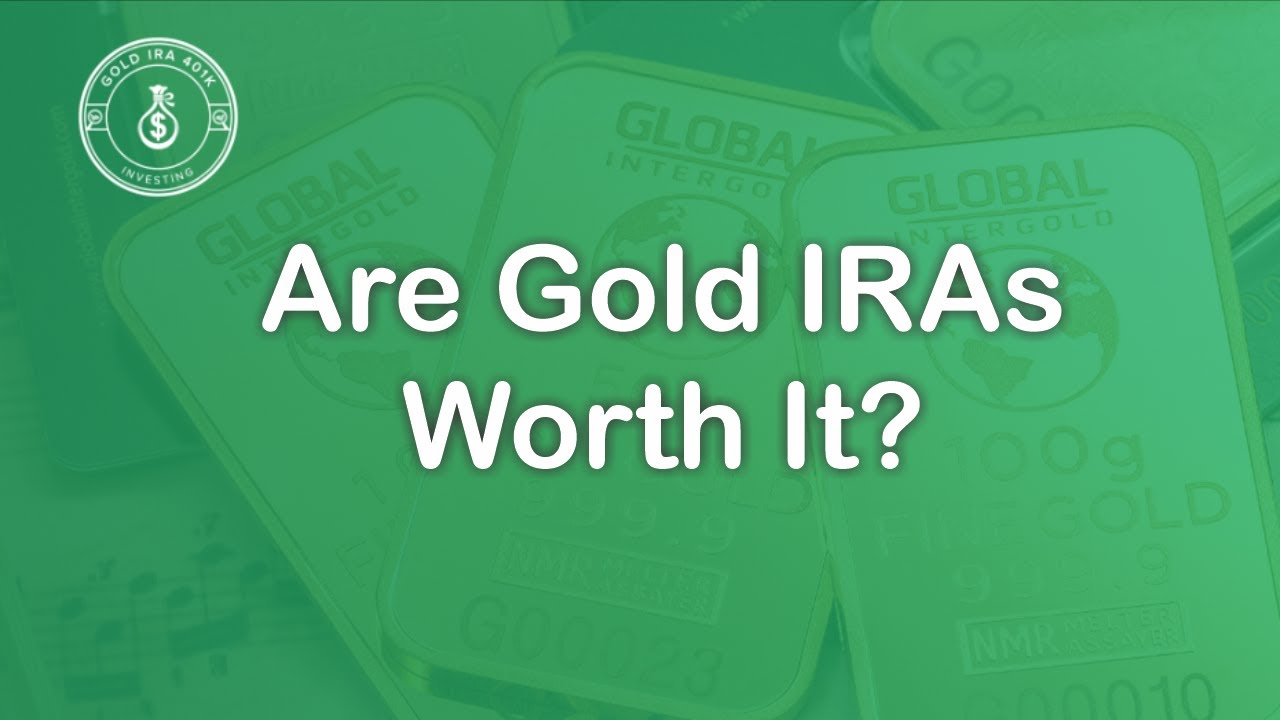
Are Gold IRAs Worth It?
Jason 0 Comments Retire Wealthy Why Gold IRA
are gold iras worth it a gold ira can be a good option for investors who want to diversify their retirement accounts and also take advantage of the hedging benefits that the yellow metal offers against other financial assets like paper currency and stocks many financial experts recommend keeping five percent to ten percent of a portfolio in gold how to invest in a gold ira if you want to hold physical gold in an ira the first step is to open a self-directed ira styra one that you manage directly with a custodian the custodian is an irs approved financial institution bank trust company brokerage but many financial services and mutual fund companies who handle regular iras don't do the self-directed version you also need to select a precious metals dealer that will make the actual gold purchases for your ira your custodian may be able to recommend one keep in mind that not every self-directed ira custodian offers the same investment choices so make sure physical gold is one of their offerings before you open an account you can set up the stira as either a traditional ira tax-deductible contributions or a roth ira tax-free distributions the next step is to fund the account with a contribution subject to contribution limits of course a transfer or a rollover from a qualified plan such as 401k 403b or 457 plan after that you can select investments for the account and your custodian and metals dealer will complete the transactions on your behalf what's the difference between gold iras and physical gold gold iras enable investment in physical gold as an asset class rather than physical gold in the investors direct possession is a gold ira for seniors worth it if you're looking to invest your funds in a safe low-risk way gold iras can be a great way to do it not only can they protect your retirement savings from market swings seen with stocks and other common investments but they can offer the chance at a slow and steady growth too how does a gold ira for seniors work for seniors gold iras work much as they do for younger investors the only difference you can contribute more annually as a senior or anyone over the age of 50 you can contribute 1 000 more than those on the younger end for a comparison of the best gold ira companies visit https colon slash slash www.buldera401convesting.com gold ira company slash click link in the description below

As found on YouTubeRead More
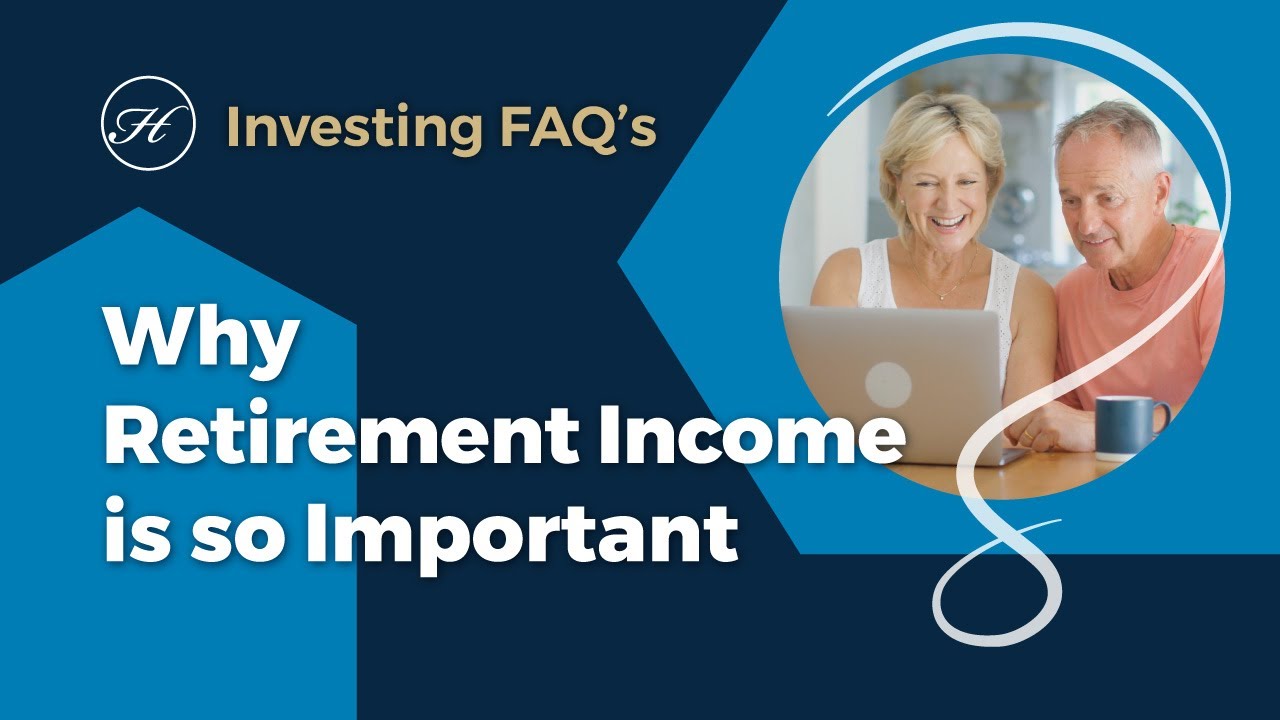
Why Retirement Income is so Important
Jason 0 Comments Retire Wealthy Retirement Planning Tips for Retiree's
Canada is getting older in 1980 less than 2 A5 million Canadians were over the age of 65 around 9% of the Canadian population recently that number was over 7.3 million almost 19% of the population in 1980 the average 65-year-old could expect to reach 81 now the average 65-year-old can expect to reach 86 and there are almost 50% more Canadians aged 100 or older than there was two decades ago basically more Canadians are getting older and living longer which poses a significant challenge for retirement funding traditional retirement savings have relied on withdrawing from a fixed amount of capital with some cash flow from CPP OAS and fixed income Investments like bonds and gic's however as Canadians live longer they may expect significant costs down the road such as long-term care at the same time most of these fixed income Investments are paying at rates below current inflation levels and what about running out of capital some Canadians are faced with the difficult and complex choice of delaying retirement or going back to work compromising the retirement lifestyle dreams or passing on the cost of care to the Next Generation attractive and steady monthly income can help simplify things for retirees Harvest Equity income and enhanced Equity income ETFs pay consistent monthly income at rates above inflation they are RSP and riff eligible they hold portfolios of established companies that remain exposed to market growth High income from Harvest Equity income ETFs can help retirees offset their Rift payments supplement income and Live Well into retirement visit our website for more information on harvest income ETFs for retirement Harvest income happens [Music] here

As found on YouTubeRead More
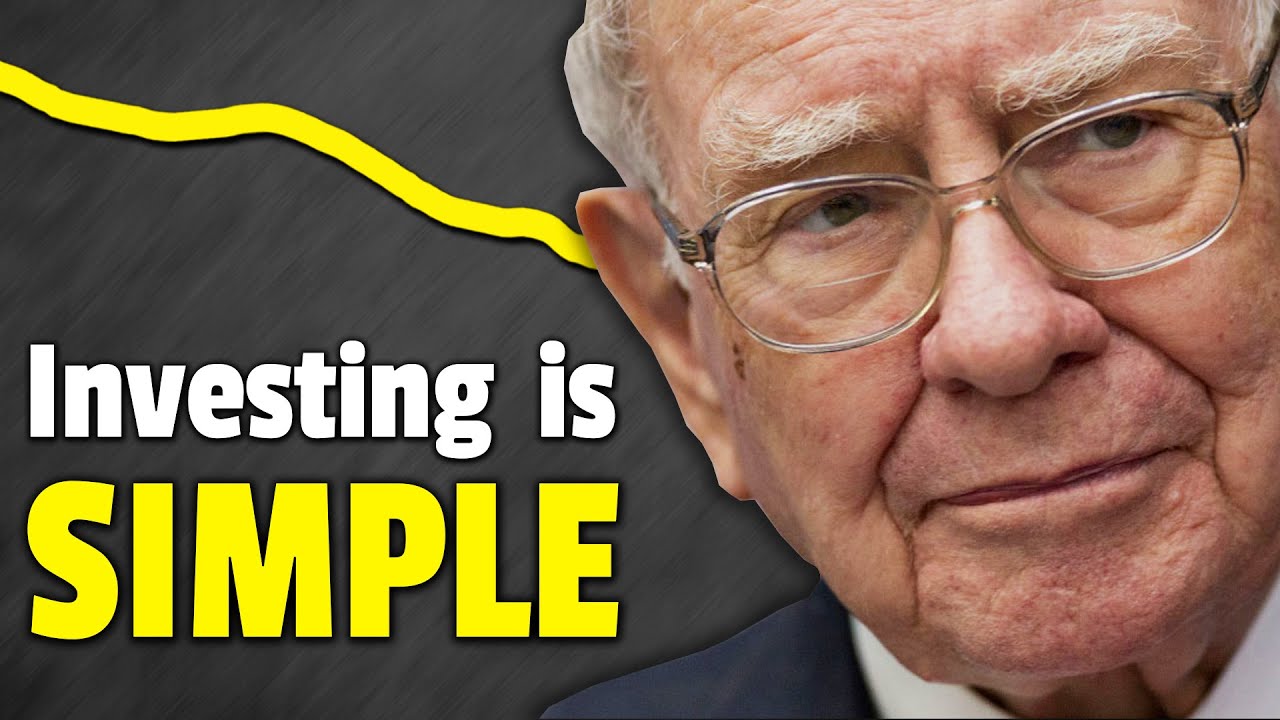
Warren Buffett: How To Turn $10,000 Into Millions (Simple Investment Strategy)
Jason 0 Comments Retire Wealthy Retirement Planning
you can't really fail at it unless you buy the wrong stock or just get excited at the wrong time and i would like to just spend just a couple of minutes uh giving you a little perspective uh on how you might think about about uh investments as opposed to the uh tendency to focus on what's happening today or even this minute as you go through and to help me in doing that i'd like to go back through a little personal history and uh and we will start i have here up here in new york times of march 12 1942 and i'm a little behind on my reading and if you go back to that time it it was about what just about three months um since we got involved in a war which uh we were losing at that point uh the newspaper headlines were filled with bad news from the pacific and i've taken just a couple of the headlines from the days preceding march 11th which i'll explain it's kind of a momentous day for me and so you can see these headlines we've got slide 2 up there i believe and uh we were in trouble big trouble in the pacific uh it was only going to be a couple months later that the philippines fell but here we were getting bad news we might go to slide three for march 9th uh uh i hope you can read the headlines anyway the price of the paper is three cents incidentally um the uh and uh uh let's see we've got march 10th up there a slide i'm i want to get to where there's advanced technology of slides i want to make sure i'm showing you the same thing that i'm seeing in front of me so anyway on march 10th uh when again the news was bad full clearing path to australia and it was like it the stock market had been reflecting this and i'd been watching a stock called city service preferred stock which had sold at 84 dollars the previous year it had sold at 55 the year before early in the in january two months earlier and now it was down to forty dollars on march 10th so that night despite these headlines i said to my dad i said i think i'd like to pull the trigger and i'd like you to uh buy me three three shares of city certified the next day and that was all i had i mean that was my capital accumulated uh uh over the previous five years or thereabouts and so my dad the next morning um bought three shares well let's take a look at what happened the next day let's go to the next slide please and it was not a good day the stock market the dow jones industrials broke 100 on the downside now they were down 2.28 as you see but that was the equivalent of about a 500 point drop now so i'm in school wondering what is going on of course uh incidentally you'll see on the left side of the chart the new york times put the dow jones industrial average below all the averages they calculated they had their own averages which have since disappeared but the dow jones has continued so the next day uh we can go to the next slide and you will see what happened the stock that was in 39 my dad bought my stock right away in the morning because i'd asked him to my three shares and uh so i paid the high for the day that 38 and a quarter uh was my tick which is the high for day and by the end of the day it was down to 37 uh which was really kind of characteristic of my timing in stocks that was going to appear in future years uh um but uh uh it was on the what was then called the new york curb exchange then became the american stock exchange but things even though the war until the battle of midway looked very bad and if you'll turn to the next slide please you'll see that the stock did rather well you can see where i bought at 38 and a quarter and then the stock went on actually to eventually be called by the city service company for over 200 dollars a share but this is not a happy story because if you go to the next page you will see that i well as they always say it seemed like a good idea at the time you know uh so i sold those i made five dollars on it it was it was again typical of behavior but when you watch you go down to 27 uh you know it looked pretty good to get that profit well what's the point of all this well we can leave behind the city service story and i would like you to again imagine yourself back on march 11th of 1942 and as i say things were looking bad in the european theater as well as what was going on in in the pacific but everybody in this country knew uh america was going to win the war i mean it it was you know we'd gotten blindsided but but we were we were going to win the war and and we knew that the american system had been working well since 1776.

So if you'll turn to the next slide i'd like you to imagine that at that time uh you had invested ten thousand dollars and you put that money in an index fund we didn't have index funds then but but you in effect bought the s p 500 now i would like you to think a while and don't do not change the slide here for a minute i'd like you to think about how much that 10 000 would now be worth if you just had one basic premise just like in buying a farm you buy it to hold throughout your lifetime an independent and you look to the output of the farm to determine whether you made a wise investment you look to the output of the apartment house to decide whether you made a wise investment if you buy an apartment small apartment house to hold for your life and let's say instead you decided to put the ten thousand dollars in and hold a piece of american business uh and never look at another stock quote never listen to another person give you advice or anything of the sort i want you to think how much money you might have now and now that you've got a number in your head let's go to the next slide and we'll get the answer you'd have 51 million dollars and you wouldn't have had to do anything you wouldn't have to understand accounting you wouldn't have to look at your quotations every day like i did that first day i'd already lost 3.75 by the time i came home from school uh all you had to do was figure that america was going to do well over time that we would overcome the current difficulties and that if america did well american business would do well you didn't have to pick out winning stocks you didn't have to pick out a winning time or anything of the sort you basically just had to make one investment decision in your life and that wasn't the only time to do it i mean i could go back and pick other times that uh would work out even greater gains but as you listen to the questions and answers we give today just remember that the over the overriding question is how is american business going to do over your investing lifetime uh i would like to make one other comment because it's it's a little bit interesting let's let's say you're taking that ten thousand dollars and you listen to the profits of doom and gloom around you and and you'll get that constantly throughout your life and instead you use the ten thousand dollars to buy gold now for your ten thousand dollars you would have been able to buy about 300 ounces of gold and while the businesses were reinvesting uh in more plants and new inventions came along you would go down every year into your look in your safe deposit box and you'd have your three ounce 100 ounces of gold and you could look at it and you could fondle it and you could i mean whatever you wanted to do with it but it didn't produce anything it was never going to produce anything and what would you have today you would have 300 ounces of gold just like you had in march of 1942 and it would be worth approximately four hundred thousand dollars so if you decided to go with a non-productive asset goal instead of a productive asset which actually was earning more money and reinvesting and paying dividends and maybe purchasing stock whatever it might be you would now have over 100 times uh the value of what you would have had with a non-productive asset in other words for every dollar you have made in american business you'd have less than a penny by of gain by buying in the store value which people tell you to run to every time you get scared by the headlines or something disorder it's it's just remarkable uh to me that we have operated in this country with the greatest tailwind at our back that you can imagine it's an investor's i mean you can't really fail at it unless you buy the wrong stock or just get excited at the wrong time but if you if you owned a cross-section of america and you put your money in consistently over the years there's just there's no comparison against owning something that's going to produce nothing and there frankly there's no comparison with trying to jump in and out of stocks and and pay investment advisors if you'd followed my advice incidentally or this retrospective advice which is always so easy to give uh if you'd follow that of course you're there's one problem buddy your your friendly stock broker would have starved to death i mean you know and you could have gone to the funeral to atone for their fate but the truth is you would have been better off doing this than than a very very very high percentage of investment professionals have done or people have done that are active that it's it's very hard to move around successfully and beat really what can be done uh with a very relaxed philosophy and you do not have to be you do not have to be you do not have to know as much about accounting or stock market terminology or whatever else it may be or what the fed is going to do next time and whether it's going to raise rates three times or four times or two times none of that counts at all really in a lifetime of investing what what counts is is having a a philosophy that you've that you stick with that you understand why you're in it and then you forget about doing things that you don't know how to do
As found on YouTubeRead More
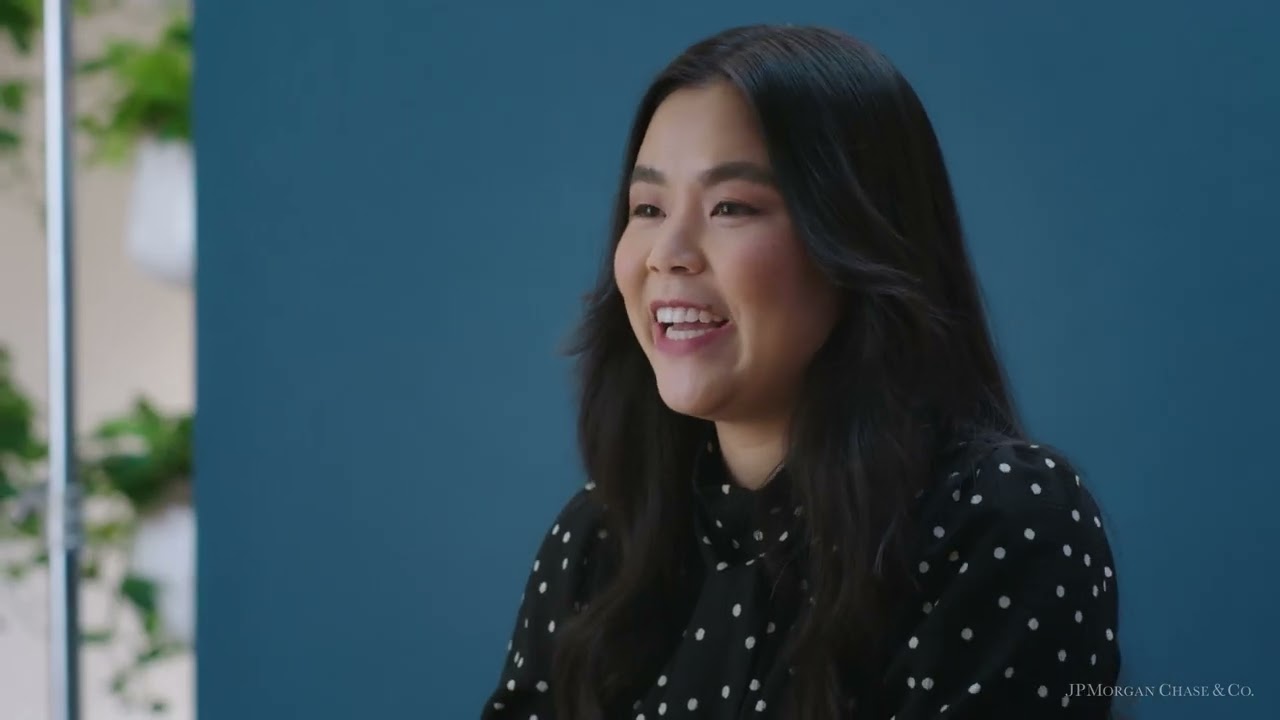
Day in the Life of a Wealth Management Analyst | JPMorgan Chase & Co.
Jason 0 Comments Retire Wealthy
[Music] hi i'm marcela i am currently a banker analyst in the jpmorgan private bank brazil team in the new york city office i work in the private banking team we help manage our clients wealth when we do like the most basic things that you know credit cards and helping with their daily needs as well as to section planning um structure and like complex lending operations what i like the most about my role clients recognize me they call me and you can have a conversation as if you've known them for years my manager is constantly giving me feedback being our voice giving us plenty of opportunities i did a presentation on my summer internship and this slide went to mary erdos the ceo of acid and wealth management she emailed me saying it was like a great deck and like i still have that email saved in my folder my day is intense busy and unpredictable practicing yoga helps you deal with these emotions in the sense of try to stay calm born and raised in sao paulo brazil i studied economics in the university of michigan in ann arbor i feel like i'm a really like extrovert individual advice i've been giving is feedback is always good even if it's bad networking is your number one tool are we good thank you [Music]

As found on YouTubeRead More
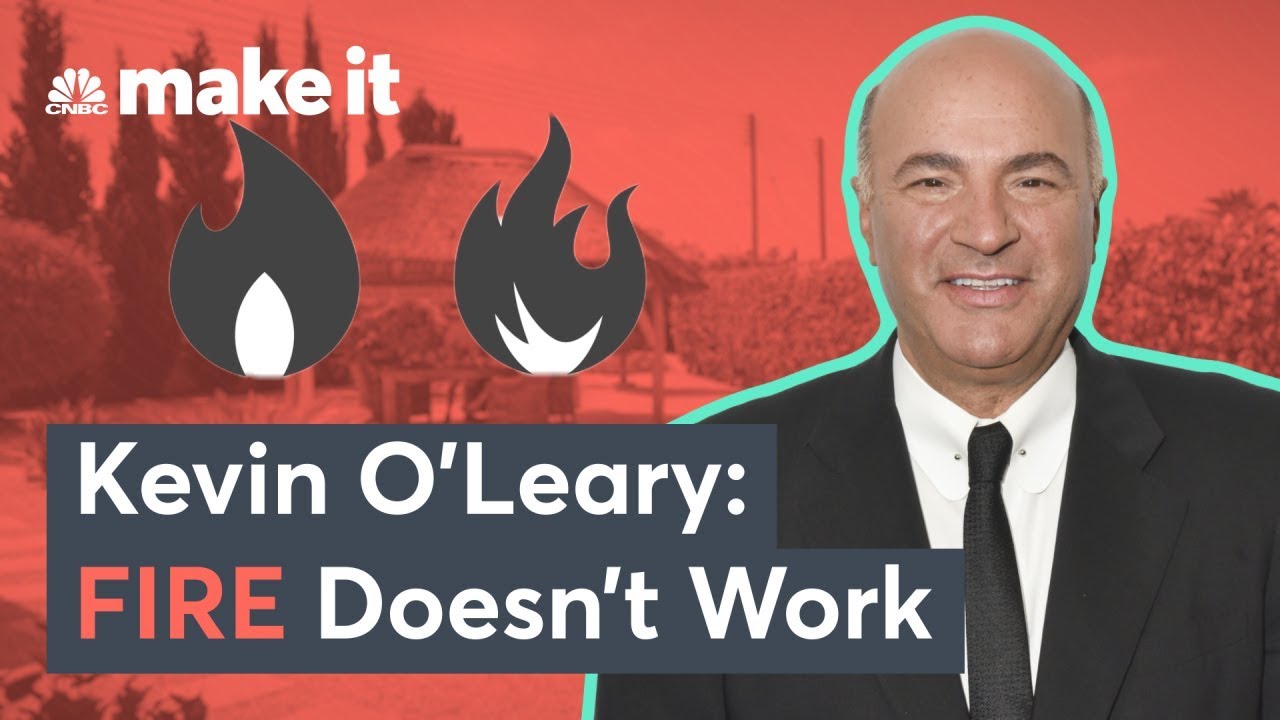
Kevin O’Leary: Why Early Retirement Doesn’t Work
Jason 0 Comments Retire Wealthy Retirement Planning Tips for Retiree's
This whole idea of financial independence retire early doesn't work. Let me tell you why. It happened to me. On the sale of my first company, I achieved great liquidity and I thought to myself, "Hey. I'm 36. I can retire now." I retired for three years. I was bored out of my mind. Working is not just about money. People don't understand this very often until they stop working.

Work defines who you are. It provides a place where you're social with people. It gives you interaction with people all day long in an interesting way. It even helps you live longer and is very, very good for brain health. Staying stimulated is how people live into their 90s. I'm not kidding. So when am I retiring? Never. Never. I don't know where I'm going after I'm dead, but I'll be working when I get there too..
As found on YouTubeRead More
